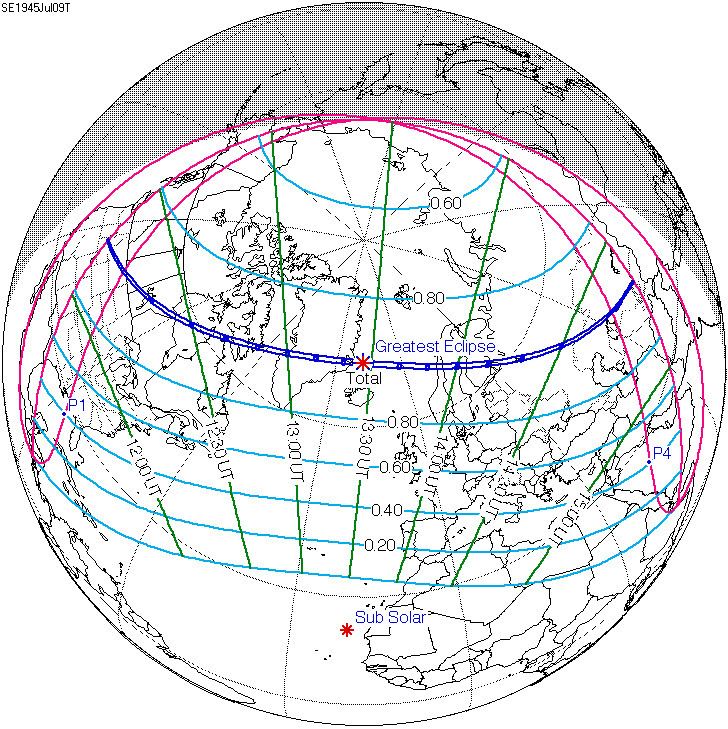Nature Total Magnitude 1.018 Max. width of band 92 km (57 mi) | Gamma 0.7356 Duration 75 sec (1 m 15 s) Greatest eclipse 13:27:46 | |
 | ||
A total solar eclipse occurred on July 9, 1945. A solar eclipse occurs when the Moon passes between Earth and the Sun, thereby totally or partly obscuring the image of the Sun for a viewer on Earth. A total solar eclipse occurs when the Moon's apparent diameter is larger than the Sun's, blocking all direct sunlight, turning day into darkness. Totality occurs in a narrow path across Earth's surface, with the partial solar eclipse visible over a surrounding region thousands of kilometres wide. The path of totality crossed northern North America, across Greenland and into Scandinavia, western Soviet, and central Asia.
Contents
Solar eclipses 1942-1946
Each member in a semester series of solar eclipses repeats approximately every 177 days and 4 hours (a semester) at alternating nodes of the Moon's orbit.
Note: The partial solar eclipse on September 10, 1942 occurs in the previous lunar year eclipse set.
Saros 145
This solar eclipse is a part of Saros cycle 145, repeating every 18 years, 11 days, containing 77 events. The series started with partial solar eclipse on January 4, 1639, and reached a first annular eclipse on June 6, 1891. It was a hybrid event on June 17, 1909, and total eclipses from June 29, 1927 through September 9, 2648. The series ends at member 77 as a partial eclipse on April 17, 3009. The longest eclipse will occur on June 25, 2522, with a maximum duration of totality of 7 minutes, 12 seconds.
